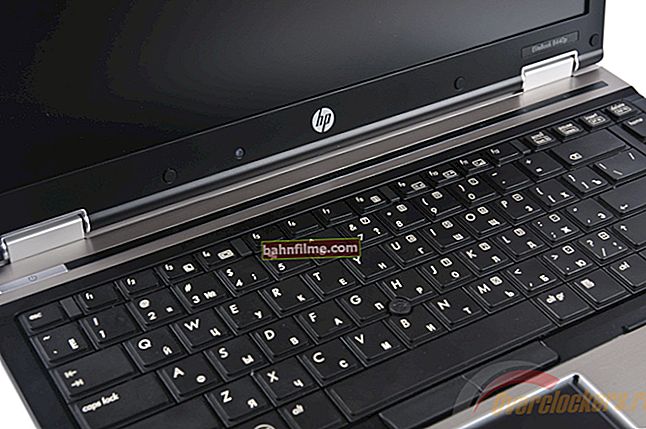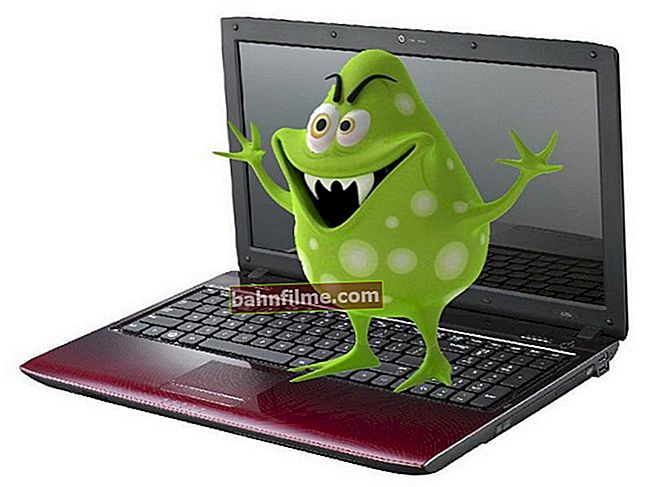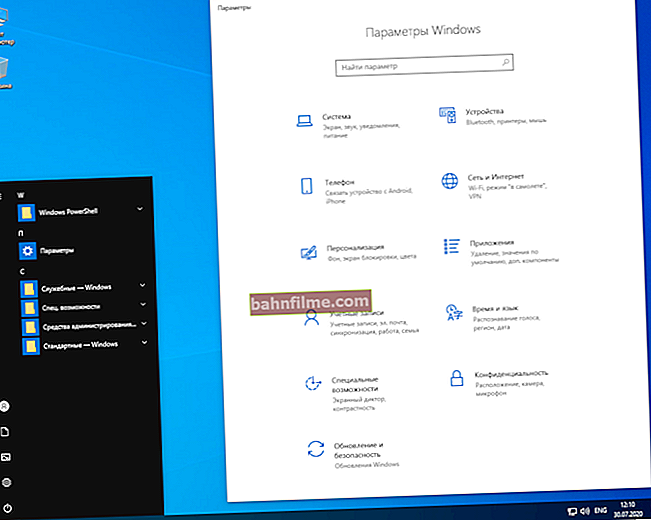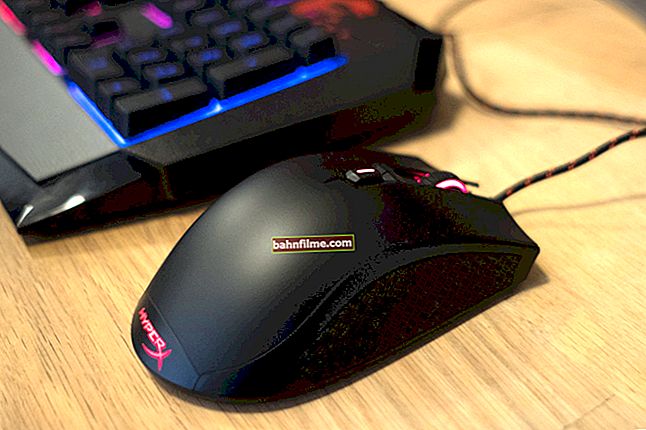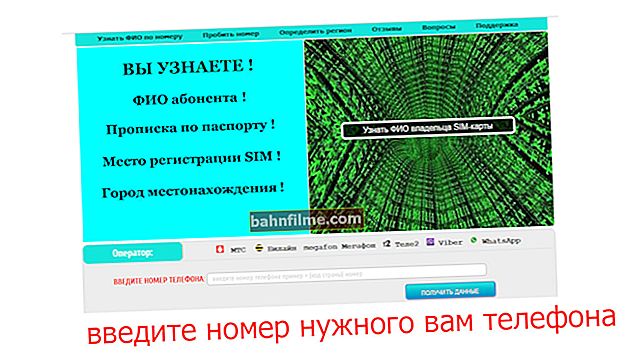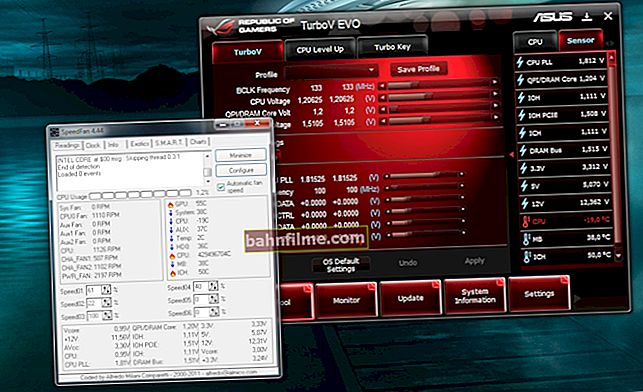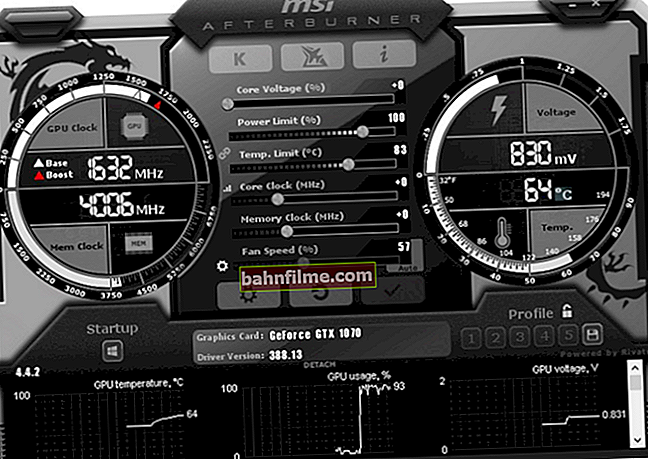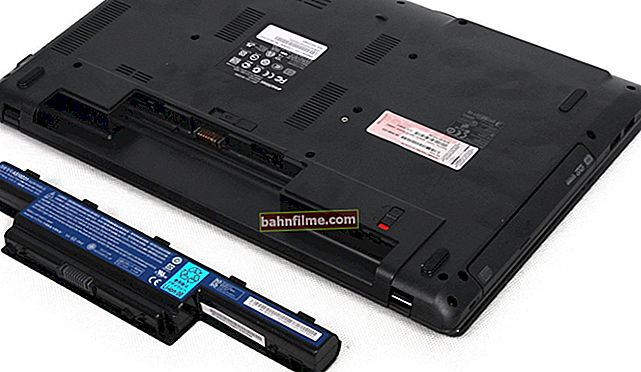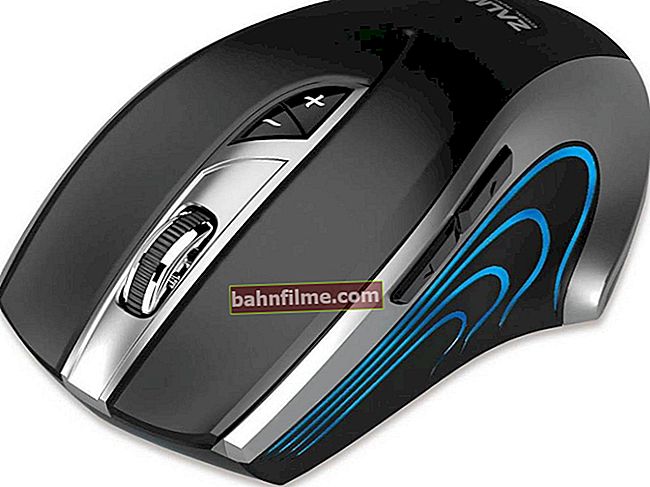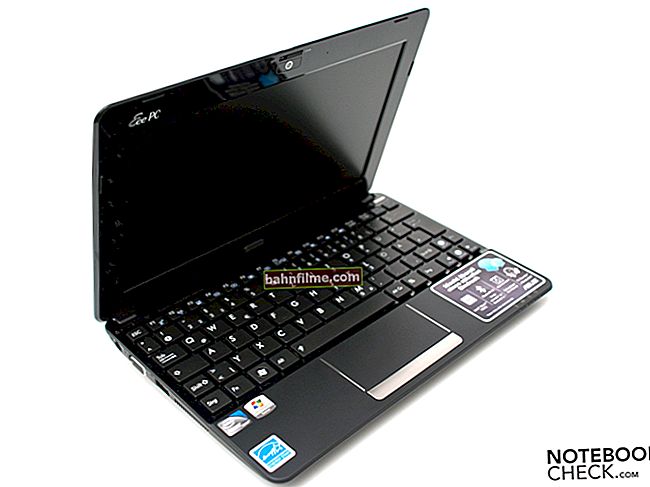
A question from a user ...
Hello. My 1TB Seagate Expansion external hard drive (without power adapter) was purchased in 2015.Since then it has worked well, I used it as additional memory for music, photos, videos (I have a computer and a laptop - it is convenient to transfer data between them).
The other day I connect it to the USB port and I see that the computer does not see the external hard drive at all! I tried to connect it to a laptop - the same thing, even the LED is off. Do not tell me what could be the reason, how can I fix it (I didn’t drop the disc, didn’t hit it, didn’t pour it over, did I handle it very carefully)?
There are no particularly necessary documents on the disk, but there is a large archive of interesting files accumulated recently.
Thanks in advance.
Good day!
In general, there are quite a few reasons why this could happen: for example, a USB cable has become unusable. In this article I will try to give the most basic reasons for this "invisibility" problem. By going through them, you and many other users will be able to fix a similar problem on their own, thereby saving on time and money ✌.
So...
*
Reasons for invisible external hard drive
The problem with the hardware // can be determined by external signs
The first thing I want to start this article with is with "external signs" , because it is by them that you can determine whether there are problems with the iron itself. And you see them earlier than all other parameters and settings in Windows.
When connecting a disk to a USB port, you must:
- LED on: almost all external drives are equipped with LEDs that start to light up (blink) when they are connected to USB. If the LED is off, there may be a problem with the USB cable, USB port (it is recommended to try connecting to another USB port, other devices: computer, laptop).
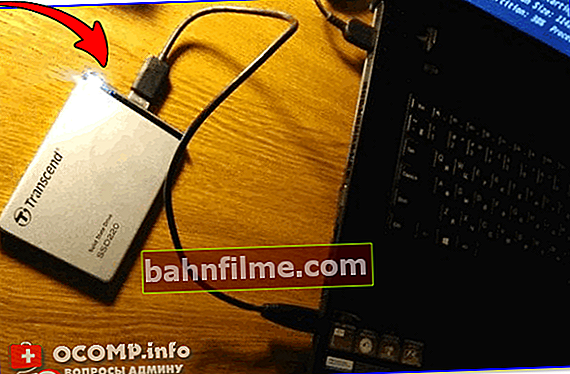
The LED on the disk started to light up
Also, if the LED is off (and the drive is invisible), there may be a problem not with the drive itself inside the case, but with the board (controller). If there is no important data on the disk, you can try to open it and connect it directly (how to do it - the link below).
- a distinctive Windows sound is also produced;
- there should be a sound of "movement" inside the disc: a very slight "hiss" (subtle). Just do not confuse this sound with loud clicks, intermittent bumps, ticks, etc. - all this indicates a problem with the disk mechanics, in which case the disk needs to be carried to the service (especially if it contains important data). Note: some models of disks may emit light subtle clicks during operation (this occurs repositioning of the heads). If the disk has already been in use, then you probably know how your device "makes noise"
 .
.
To help!

Repairing an external hard drive at home // trying to restore functionality - //ocomp.info/remont-vneshnego-zhestkogo-diska.html
Why all of the above is written: just if, when connecting a disk to several computers, it does not show any signs of life (the LED is off, the sound of movement inside is inaudible), then it makes no sense to look further for the cause of its "invisibility", because there is a problem with iron (with wires, with the disk itself, with USB ports).
*
Drive letter conflict
Let's assume that the disc has shown signs of life, and now it makes sense to move on. 
Each storage medium: hard disk, optical disk, floppy disk, etc. - when connected to a computer, a letter is assigned automatically (C: \, D: \, E: \, etc.). It happens that Windows, as a result of some kind of failure or conflict, assigns the wrong letter (or does not do it at all!) - as a result, the media is not displayed. Moreover, this happens not so rarely ...
I recommend trying to change the drive letter first. To do this, you need to open the utility in Windows - disk management .
How to open Disk Management (Windows 7/8/10):
- push buttons Win + R ;
- enter command diskmgmt.msc ;
- to push Enter (see screenshot below).
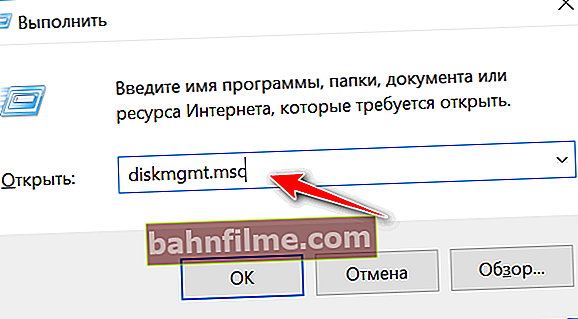
diskmgmt.msc - start disk management
In the list of drives, select the external hard drive (if it is not there, go to the next paragraph of the article: to the problem with the drivers), right-click on this line, and in the pop-up context menu select "Change drive letter or drive path ..." (as in the screenshot below).

Change drive letter
After that, select any other letter and click change (see screenshot below).

Change letter
To help!

External drives and flash drives are not displayed on my computer. Windows does not assign letters to connected drives - //ocomp.info/problema-windows-ne-naznachaet-bukvyi-podklyuchaemyim-fleshkam-i-diskam.html
*
Filesystem problem
IN disk management pay attention to how the disc is displayed. If a black stripe "burns" above it and says "Not allocated", it means that the disk is simply not formatted.
If the hard drive is new - this happens quite often (not all manufacturers format the disc).
To format the disk - in disk management select it in the list, and right-click on it, then click on the option "Create simple volume" (see screenshot below) .
Note! Formatting will erase all data on the disk! If you had files on it before, then most likely a failure occurred, try first to fix errors on the disk, more on that below.

Disk is not formatted
In the next step, you will need to specify the drive letter (choose any free one), the file system (I recommend NTFS), and set the volume size (usually on external hard drives this parameter is not changed, making one single volume for the entire disk size).
To help!

How to format a hard drive: ways - //ocomp.info/kak-otformatirovat-zhestkiy-disk.html
If your external hard drive has already been formatted , and you have already copied files from it, then the display of the "unmarked area" (or the RAW file system) may occur due to:
- incorrect disconnection of the disk from the USB port (for example, when the information was being copied, and you abruptly "pulled out" the USB cord);
- a power outage could occur: for example, during a power outage, its surges;
- when infected with some types of viruses;
- in case of malfunction of the piece of iron.
Most often, nevertheless, the display of the RAW file system is associated with an incorrect disk disconnection. In this case, as a rule, you can quickly fix errors and bring the disk back to life.
How to check the disk (data will not be deleted, everything will remain in place!)
First you need to run command line. How to do it:
- press the button combination Win + R ;
- in the open line enter cmd click Enter .
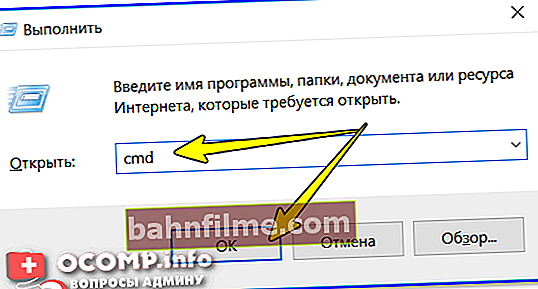
cmd - run command line
Next, on the command line, type the command chkdsk e: / f (where " e: "- this is the letter of your drive). The check takes only a few minutes. In many cases, after such a simple procedure, the computer begins to see the drive, files and folders remain intact.

Check disk // chkdsk
An alternative way of starting the check: go to "My Computer", right-click on the disk (which you want to check) and select properties (see screenshot below).

Disk Properties / This PC (My Computer)
Next in the menu "Service" run a disk check for errors (during the scan, everything found will be fixed).

Service - check disk
A few words about TV
In my practice, I came across another interesting reason due to which the disk becomes invisible. New modern TV (with some SmartTV functions) - when connecting a disk, asked the user to agree with its layout. He agreed, and everything seemed to be recorded on him normally.
But when the disk was connected to the computer, it refused to see it. The bottom line is that the TV formatted the drive to a different file system. After formatting to the NTFS file system, everything began to work "as needed" (the problem is fixed - also, through disk management, no additional programs are required).
*
Conflict or missing driver
If your external hard drive is not visible in disk management - I recommend checking if the drivers are installed on it.
Little remark ...
In general, Windows 7, 8, 10, when a USB flash drive or the same external drive is connected to a computer, the drivers are automatically installed. But in some cases, this does not happen (it is difficult to say why, whether the disk is not "normal" and there are no standard drivers for it in the system's "store", or there is some kind of error and conflict with other drivers, or else due to why ...).
If the driver for your disk is not installed, then you will not find your disk in Disk Management !!!
To check the driver installation, open device Manager ... For this:
- press the button combination WIN + R ;
- in the window that appears, enter the command devmgmt.msc and press Enter (screen below, works in Windows 7, 8, 10).
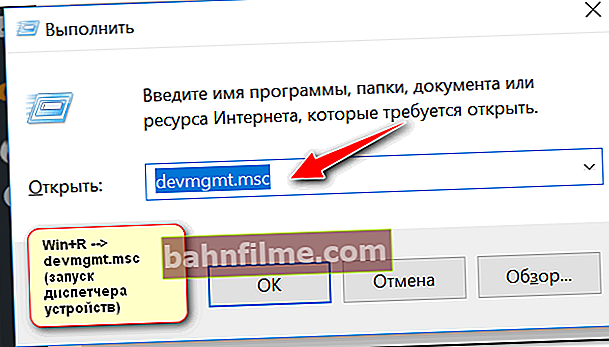
Launching Device Manager - devmgmt.msc
To help!

How to open the device manager (including in Windows 10): several ways - //ocomp.info/kak-otkryit-dispetcher-ustroystv.html
IN device manager open the tab "Disk devices". Next, notice that:
- Whether your device is listed or displayed at all;
- Also check the "Other devices" tab - it displays devices for which there are no drivers.
- Is there a yellow exclamation mark in front of your disk (if there is, then the driver for your disk is not installed). An example is shown in the screenshot below.

Left: Everything is OK with the driver (WD Elements) // Right: No driver (yellow exclamation mark) WD My Passport
How to update the driver for the disk:
- The easiest and easiest way is to use any program for auto-updating drivers: //ocomp.info/update-drivers.html
- Go to the hard drive manufacturer's website and download the driver there;
- You can try in device manager push the button "Update hardware configuration" (screen below).
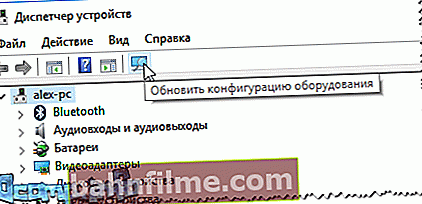
Update hardware configuration
- you can try to find the driver by hardware codes (VID, PID). You can find out how this is done here - //ocomp.info/kak-nayti-i-ustanovit-drayver-dlya-neizvestnogo-ustroystva.html
- Reinstalling Windows often helps to solve the problem with installing the driver (even more so if your disk works when connected to other PCs, and everything is in order with the driver). Although I am not a proponent of reinstalling the OS because of every error ...

*
Lack of food
Quite often, problems with external drives happen due to a lack of power. Especially if you have several devices connected to one USB port at once.
A characteristic feature when there is a lack of power: the disk at first seems to be displayed normally, but as soon as you want to copy or read something to it, it becomes inaccessible (or simply freezes).
How to fix the problem: try to buy a Y-shaped lanyard (photo is shown below) and connect the drive to two USB ports at once. I have had this with some disks that become invisible after a few seconds when trying to connect them to the USB ports of the laptop.
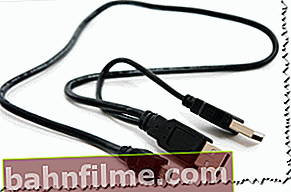
USB Y-cord for connecting an external HDD
Advice! If you connect an external HDD to a laptop and it does not see it, try connecting it to a stationary computer (or to another device). It is possible that on another device - the disk will work as expected.
A USB hub with an additional power supply can also be a good solution. An example of such a splitter is shown in the photo below.

USB hub with power supply
PS
Some types of viruses (and antiviruses, by the way) can block the connection of external media and devices. Therefore, I recommend the same:
- try connecting your drive to another PC / laptop;
- check your PC for viruses with alternative software. How to do this is described in this manual: //ocomp.info/esli-antivirus-ne-vidit-virusov.html.
*
This concludes the article, I hope you solve the problem (or at least find out what is the reason)!
For additions on the topic - I am grateful in advance.
Good luck!
👋
Article revised: 01/27/2019

 .
.

